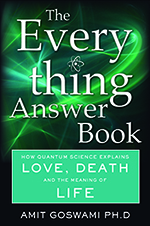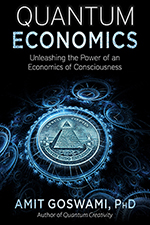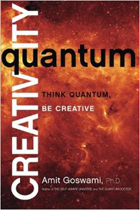One of our most important archetypal values is truth. All our intuitions hint at a truth-value, and that bothers us: Seek and ye shall find, and you will be troubled! If we follow up our troubled minds and engage creativity, the products will express a transcendent truth—this truth is a common aspect of the archetypal themes. “My country is truth,” intuited the poet Emily Dickinson. Politicians, beware!
Confusion arises because often what a poet or artist portrays looks nothing like what we ordinarily call truth. The face of the artist’s truth shifts from context to context; It is, as the Russian painter Wassily Kandinsky said, “constantly moving in slow motion.” This is because the “whole” truth is transcendent, no perfect description of it in immanence is possible, as the novelist Herman Hesse (1973) reminds us in these lines from Siddhartha:
Everything that is thought and expressed in words is one-sided, only half-truth; it all lacks totality, completeness, unity. When the illustrious Buddha taught about the world, he had to divide it into Samsara and Nirvana, into illusion and truth, into suffering and salvation. One cannot do otherwise, there is no other method for those who teach. But the world itself, being in and around us, is never one-sided. Never is a man or deed wholly Samsara or Nirvana. (p.112)
Reality consists of both Nirvana and Samsara, both the transcendent (potentiality) and the immanent (manifestation); our creativity attempts to express the transcendent archetypes in the relativity of the immanent. It never quite succeeds. A television character, trying to explain his garbled statement, said, “You should have heard it before I said it.” Strangely, he had a point. Expression compromises truth value.
Even our scientific laws do not express perfect archetypal truth, the whole truth. Science progresses when old laws yield to new ones as interpretations of the data change or better theory and new data emerge, ever extending the domains of science.
Realizing that one of the goals of creativity is to bring transcendent truth into immanence—we can understand the emphasis on product for a creative act. The product enables the creator to share the discovered truth with the immanent world; this sharing is part and parcel of creative purposiveness. This is true of the inner creativity of transformation as well. Gandhi said, “My life is my message.” Now, how many politicians today can say that?
What we have instead is the distortion of the timeless value of truth in science and media. If science itself says that the truth is relative, then naturally the value of scientific truth is undermined, and we get Fox News. And then we feign surprise and outrage.
With the idea of truth-value for our science and the importance of creativity to arrive at those values, we can fight back against the cynicism that pervades our society. If truth is relative, then there is no denying that corresponding to your liberal truth, there will be a conservative truth! Does it follow that you have to fight it out with arbitrary rules like “the majority rules.” No! Our founding fathers knew better. That is why something like the filibuster rule exists in most countries; changes in the constitution should take more than a simple majority.
Having timeless truths to pursue once again will result in big dividends for politics: This is a quantum shield against undue political influence exerted by big campaign contributors and lobbyists. Politicians of a past era had moral authority: Where did that come from? Like the poet Emily Dickinson, they too lived in the land of truth.
Now of course, there is no denying that if your truth comes from other people’s lived values, not your own, your truth will always be relative truth. In this way, although traditionally we do not expect politicians to be particularly creative, the times are changing. If you want your politics to be quantum politics, if you want to have moral authority behind what you say, you’d better engage creativity.
“Truth is that which touches the heart,” said the novelist William Faulkner. In order to become a quantum politician, you should also heed what Faulkner is saying. The heart refers to the archetype of love—traditionally called a feminine value. But remember, the era of the intuitive mind is aborning with the demand that we learn to integrate the head and the heart. In Jungian psychological terms, this involves integrating the male and the female within us. It was good to have Elizabeth Warren and Barack Obama both in liberal politics at the same time. But how much better would it have been if Obama had learned to pay attention to the archetype of love—to his heart?



